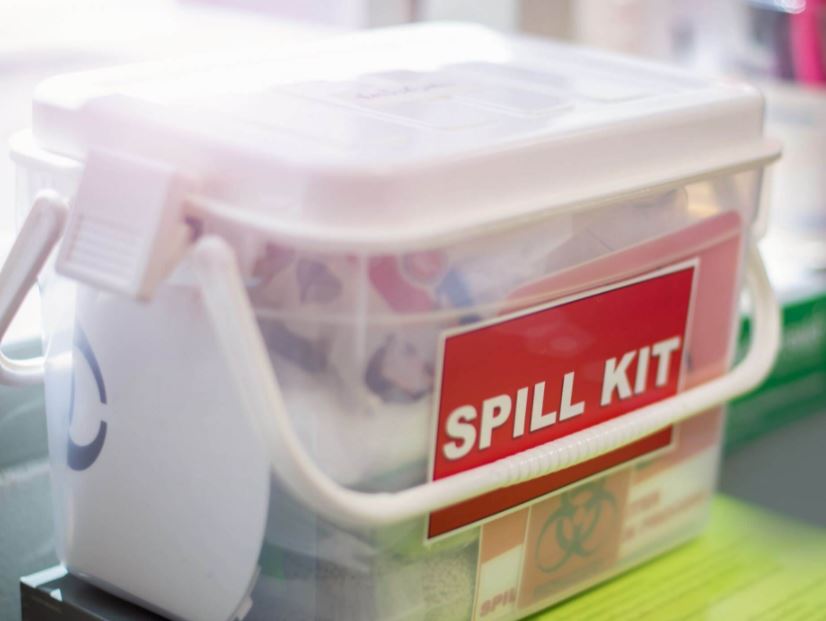In this two-part blog post series, we will cover the requirements for OSHA and CAP when it comes to creating a chemical hygiene plan. Today’s post focuses on OSHA, the Occupational Safety and Health Administration, which is responsible not only for laboratories, but for the safety of all workplaces in the United States.
There are several regulations from OSHA that apply to the histology lab when it comes to chemical hazards. One of these is 1910.1200, which was updated in 2012 to reflect the GHS safety labeling system. This update requires laboratory labels must contain the 6 elements that the GHS requires. Click here to read a post specifically on GHS labeling.
The other is 1910.1450, which is known as the laboratory standard, which provides more details on exposure limits and chemical hygiene plans, which is what we are going to focus on in this post. According to OSHA chemical hygiene plan means, “A written program developed and implemented by the employer which sets forth procedures, equipment, personal protective equipment and work practices that (i) are capable of protecting employees from the health hazards presented by hazardous chemicals used in that particular workplace and (ii) meets the requirements of paragraph (e) of this section.”.
So, what are those requirements in paragraph e that the plan must meet? This is referring to 1910.1450 (e)(3) which includes a few specific items that the plan needs to have, including:
SOPs: Standard Operating Procedures. You need an SOP for laboratory work that involves hazardous chemicals.
Criteria to Select Control Measures: The employer needs criteria for control measures on reducing hazardous material exposure, so what controls are protecting you from hazardous material, ex. PPE.
Fume Hood Function Program: A requirement that makes sure fume hoods are functioning properly. You need to identify specific measures the employer will take to make sure the fume hood is working.
 Information for Lab Personnel: It’s not enough to have a chemical hygiene plan. The staff needs to be informed about the plan. Some specific things that should be covered in that training, how to detect if chemicals have been released, i.e if there is a spill, the physical and health hazards of the chemicals they are working with so they can recognize signs and symptoms of exposure beyond safe levels. They should also know the contents of the chemical hygiene plan and how to access it, and any other reference materials like data sheets from chemical suppliers. You also have to be able to offer medical exams if an employee develops symptoms of exposure or your monitoring of exposure levels has come back above the limits.
Information for Lab Personnel: It’s not enough to have a chemical hygiene plan. The staff needs to be informed about the plan. Some specific things that should be covered in that training, how to detect if chemicals have been released, i.e if there is a spill, the physical and health hazards of the chemicals they are working with so they can recognize signs and symptoms of exposure beyond safe levels. They should also know the contents of the chemical hygiene plan and how to access it, and any other reference materials like data sheets from chemical suppliers. You also have to be able to offer medical exams if an employee develops symptoms of exposure or your monitoring of exposure levels has come back above the limits.
Approval for Laboratory Operations: If there is something that needs employer approval to be performed, the circumstances for this need to be documented.
Chemical Hygiene Officer: You need to designate someone who is responsible for implementing the chemical hygiene plan.
Extra Hazardous Chemicals: Provide provisions for extra toxic chemicals, which include establishment of a designated area for these chemicals, use of containment devices, waste removal procedures, and decontamination procedures.
Review the Plan: Again, its not enough to just have a plan. The employer needs to review the plan and evaluate effectiveness at least annually.
In our next post, we will discuss the CAP standards that apply to your chemical hygiene plan. In the meantime, learn more about creating and using a chemical hygiene plan in, How to Create and Use your Chemical Hygiene Plan, by Dan the Safety Man Scungio, one of the webinars from the 2020 Virtual Convention that is now available on NSH’s Online Learning Center.
#2021#LaboratoryOperations#Blog